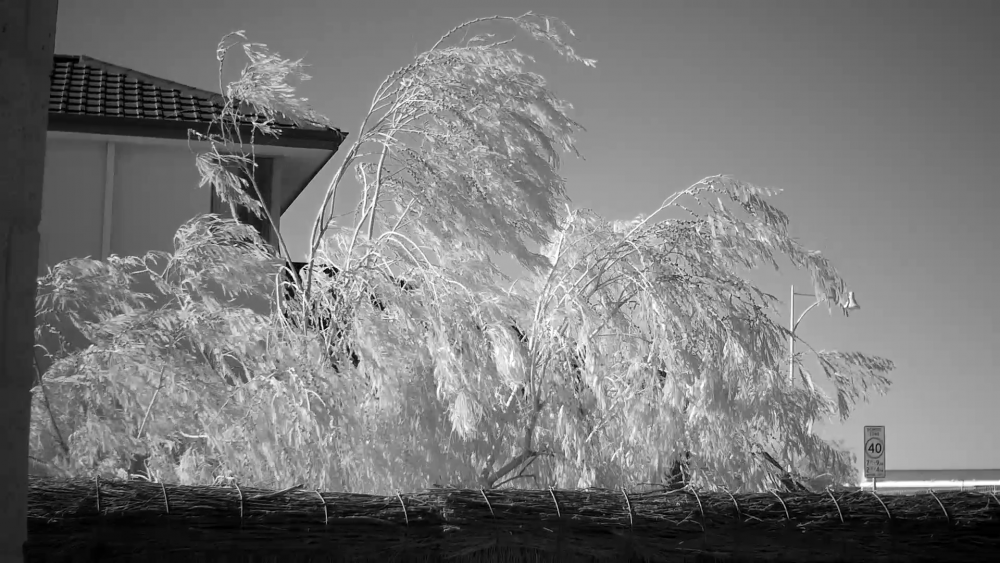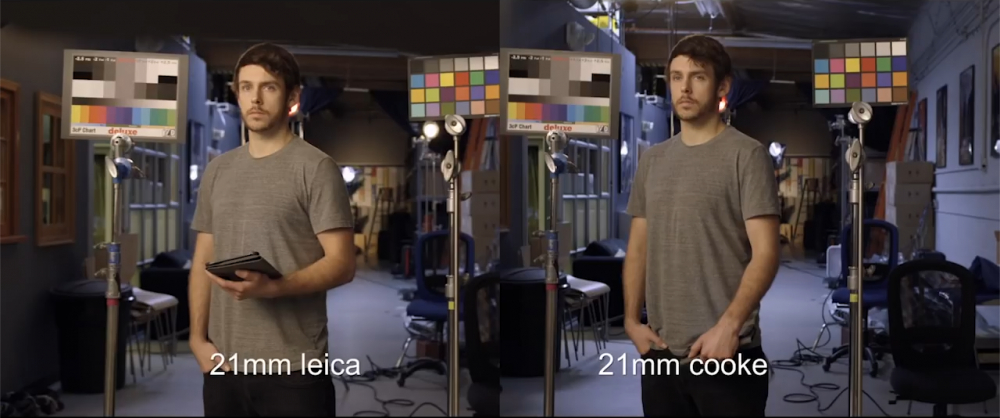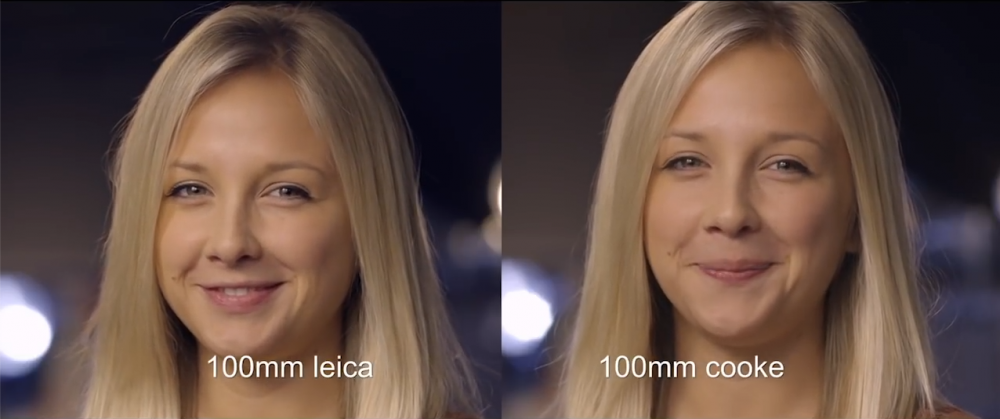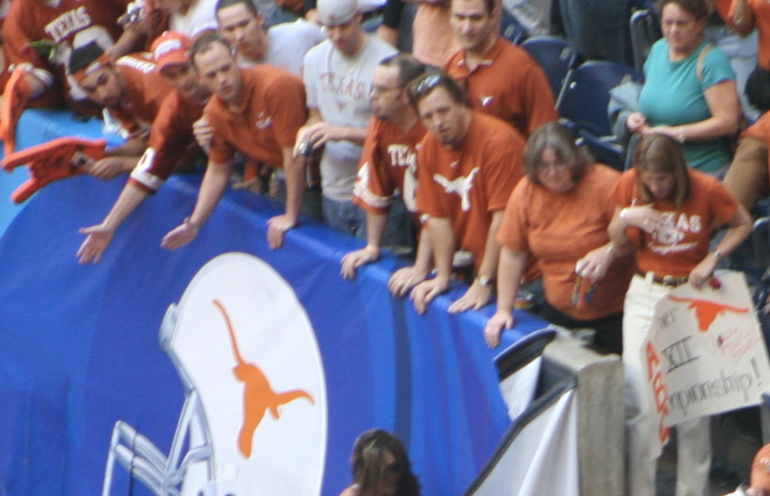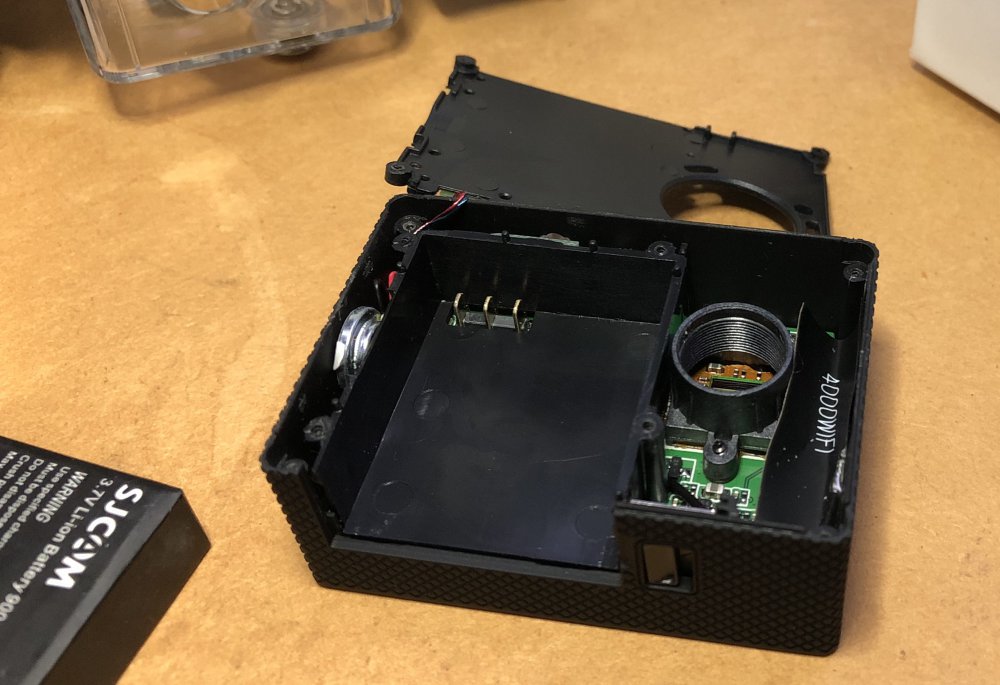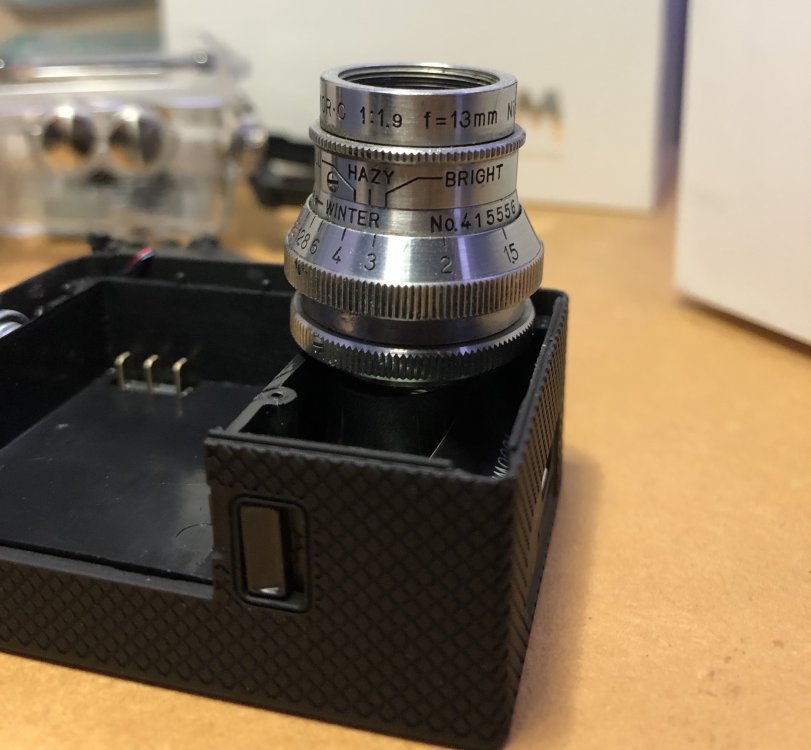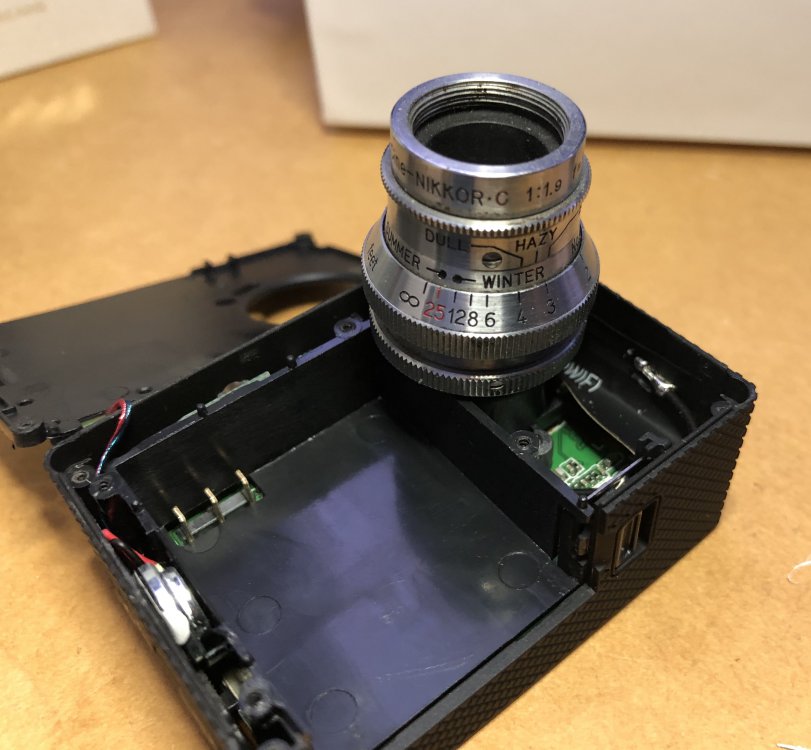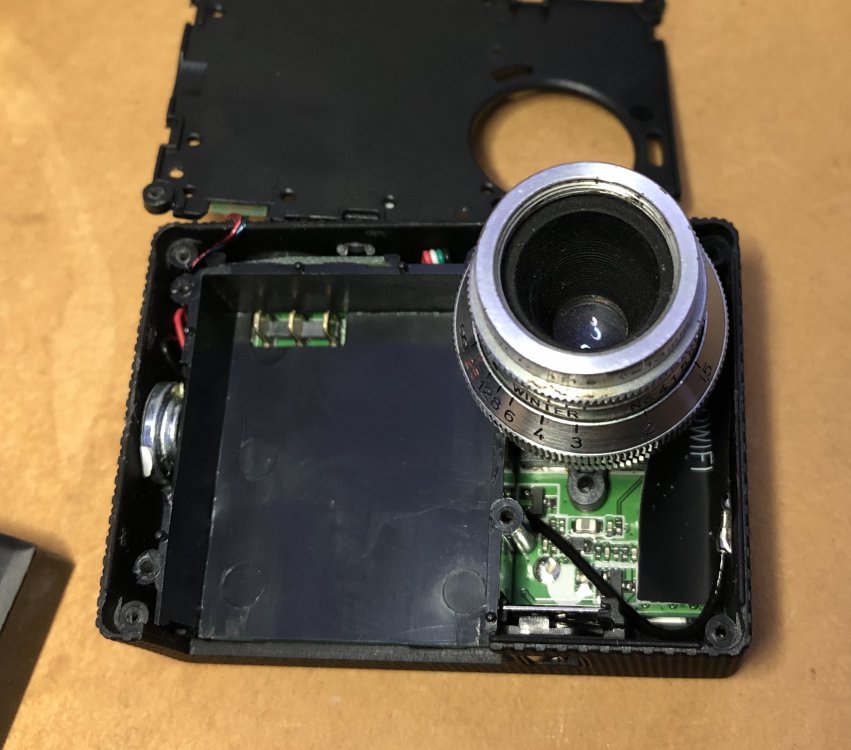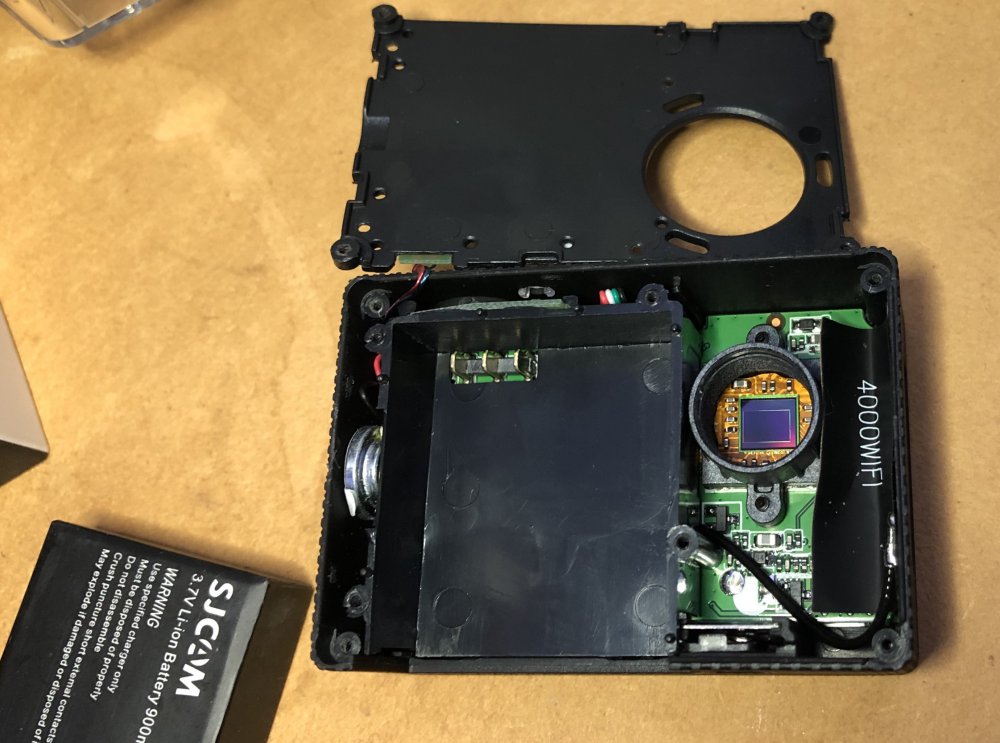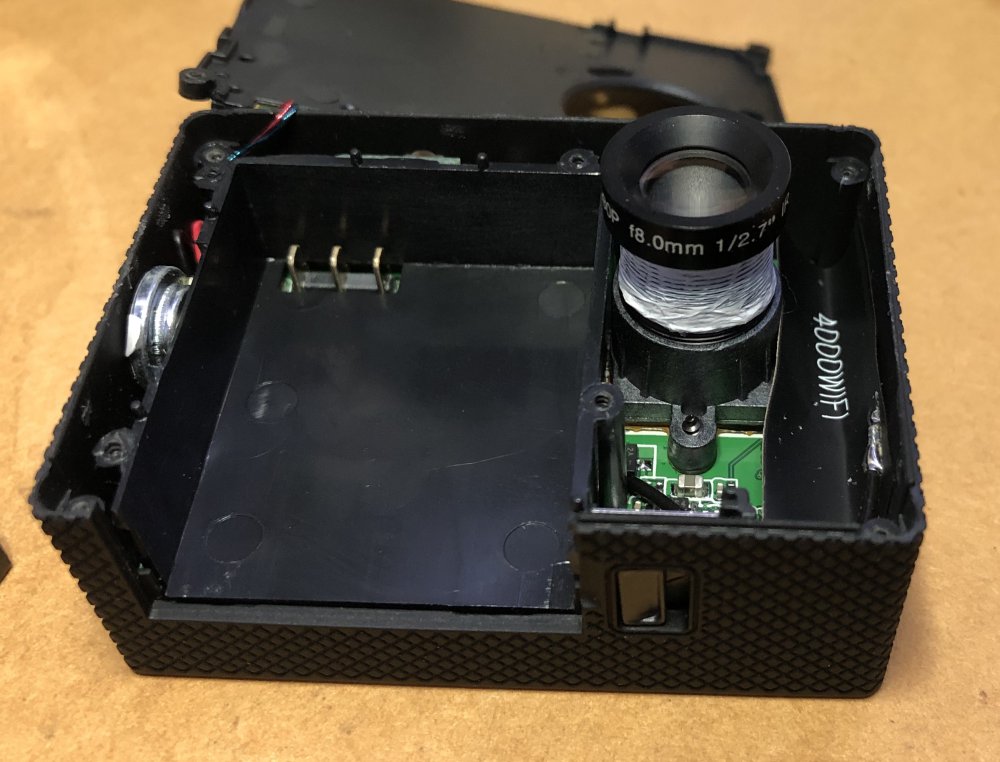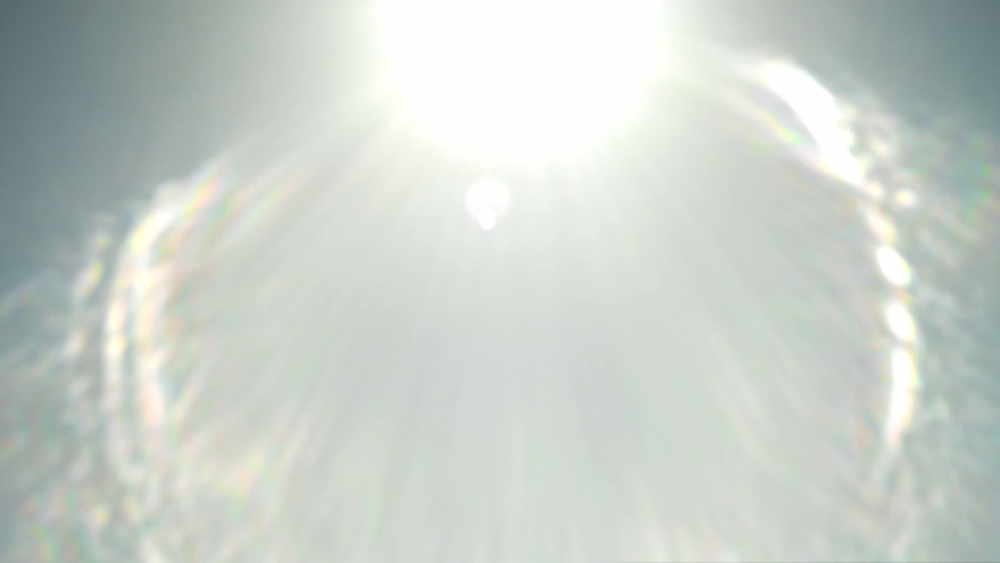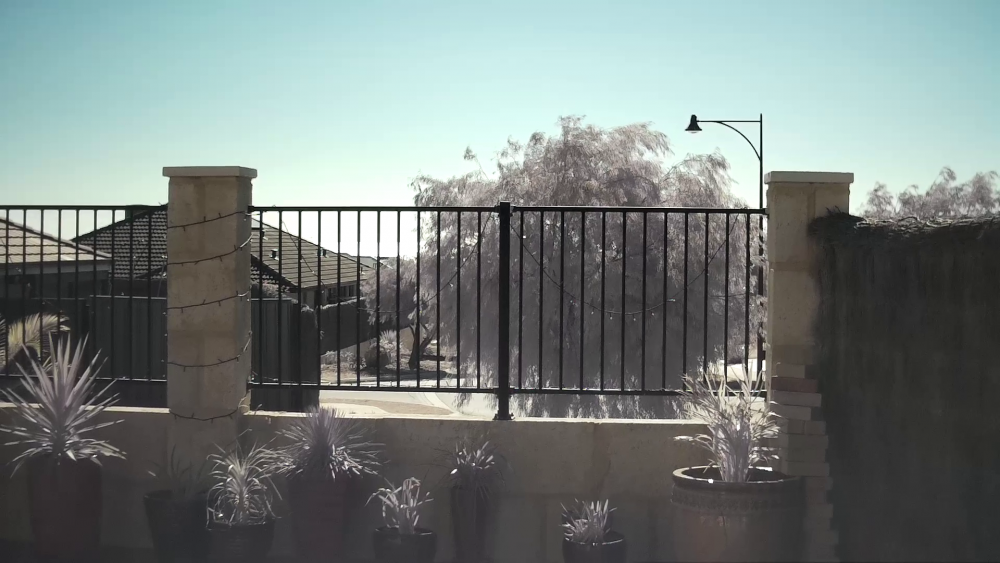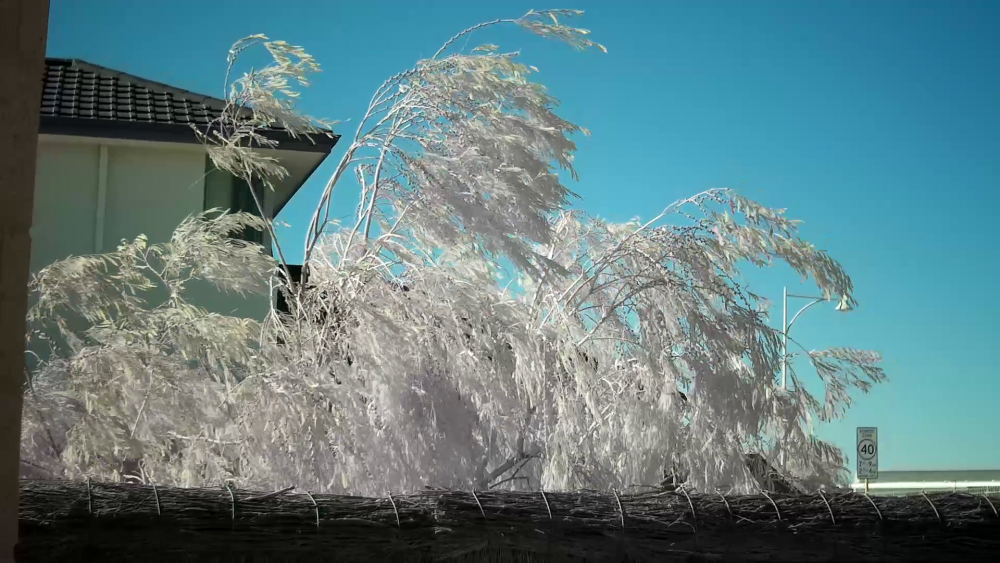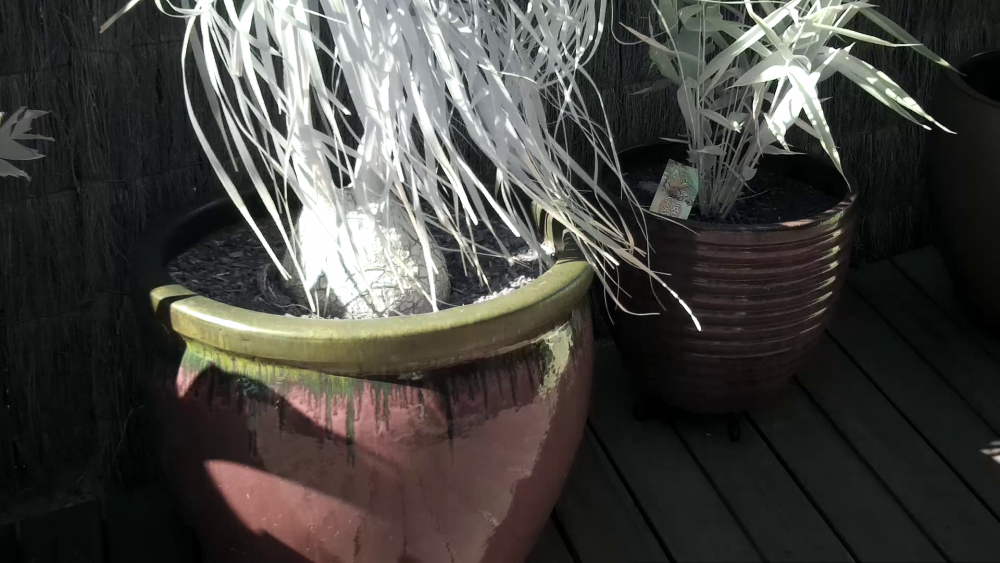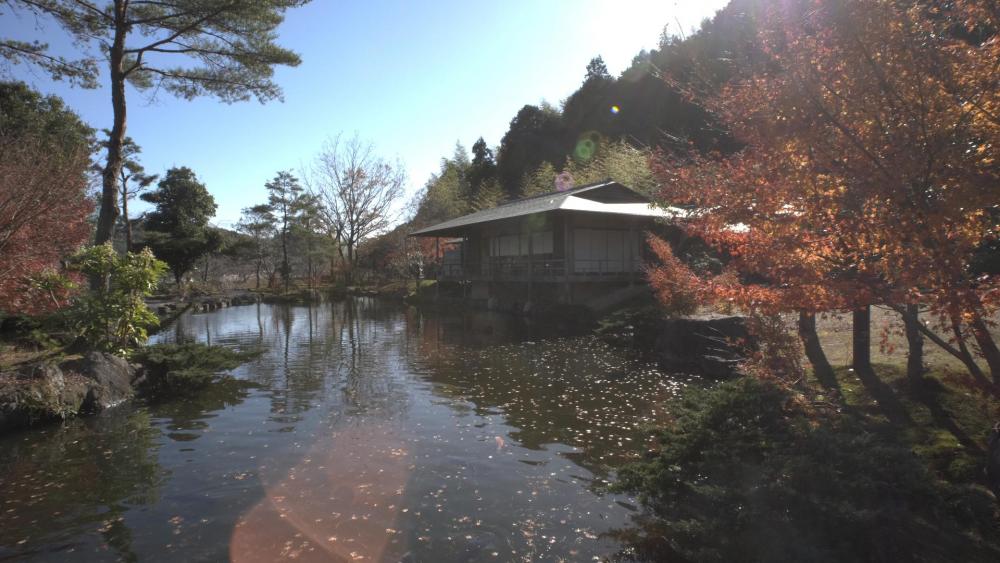-
Posts
8,009 -
Joined
-
Last visited
Content Type
Profiles
Forums
Articles
Everything posted by kye
-
I've thought a few times about what a GH6 would have to have to be better than the GH5 for me, and there's not many things TBH. Of course, I'm not the kind of person who these 24K - 300 FPS - internal RAW - 48fps burst - eyelash AF - 8kg - $12599 cameras seem to be aimed at. I have stuff invested in MFT too, but would happily re-buy a GH5 if mine broke and if I felt the need to change platforms then it would be far enough in the future that the FF camera I would buy with enough features for me wouldn't be that expensive and the lenses available are just getting more and more available and affordable. I had a burst of FOMO around FF just recently, thinking that if I even change to FF then the lenses that I'd want might be vintage primes and might all be too expensive at that point and I'd have missed out, but I kind of realised that there are enough good FF lenses available new that I could get a 'good enough' set, and partially compensate with filters. Still, if someone gave me one of these new A1 cameras then it would be great - I'd sell it and buy more interesting vintage lenses 🙂
-

Why Do People Still Shoot at 24FPS? It always ruins the footage for me
kye replied to herein2020's topic in Cameras
I kind of include that in your personal decision-making process, but it's true that you can't decide on features individually, you pick the camera that has the best offering for your particular situation, which obviously includes your budget as well. One of the things that I really see as fundamentally ridiculous in modern cameras is the absolutely atrocious codecs for the lower resolutions. Many cameras have 100Mbps 4K but 25Mbps 1080p. The logic is ridiculous.... let's make a camera that can process 260Mpps (Million pixels per second - 4K at 30p), can compress 260Mpps, and can write 100Mbps to the card, then we'll take the 1080p video mode and write to the card at one-quarter of the cameras capacity! It's not like they're protecting their cine line by crippling the 1080p mode. I think poor 1080p codecs are one of the main reasons that 1080 has such a bad reputation online, people compare their 4K mode with their 1080p mode and think that's a fair comparison. Of course, in your case you could shoot 1080p in Prores HQ, which I understand is downsampled from the whole sensor. You might be a huge fan of RAW, which I understand the benefits of for some applications, and this leads me to another annoyance, and that is why they haven't implemented higher bit-depths. Prores 4444 or Prores XQ have 12-bit and higher bitrates than HQ, so might be a sensible half-step between HQ and RAW, and it allows all the benefits of a downsampled image. If you're putting 24p onto a 23.976 (or vice-versa) then it will cause a skipped / jumped frame every 16 minutes, but because it's a rounding situation, the first frame would happen around the 8 minute mark. However, every time you cut from one clip to another you're effectively resetting the clock, so you'd have to have a clip longer than 8 minutes on the not-matching timeline, or you'd have one frame error per 16 minutes (with the first error around the 8 minute mark) if your master was being broadcast on the wrong framerate. I don't think that's a real problem in practice. -
I'm planning on shooting some stuff soon. I may even make the project B&W - here's that last still with a straight B&W conversion (and none of the other grading I would also do to it): The modding process was super-easy, so if anyone is curious then I'd recommend trying it. The only thing to watch is that you get a genuine SJ4000 as there are heaps of fakes on Ebay. I previously bought the cheapest one I could find, for the cheap camera challenge, and it was definitely a fake and the 640x480 video it captured was truly truly awful. There are a few easily google-able sites about how to spot a fake from the genuine one so it's not that hard.
-
Luckily it's an opt-in situation... 🙂 Indeed! GH6 for the win!! Seriously, a GH6 is the only camera that I would contemplate upgrading my GH5 for. Film-making is like any other technical field, there are people who are interested in what the equipment can do, and others who are interested in using it for bragging rights. You forgot the 1080p specs. Ah, don't bother. The GH5 has been killing it for many years now and releases since mostly can't touch it, and this camera is only US$6500 so......
-

Why Do People Still Shoot at 24FPS? It always ruins the footage for me
kye replied to herein2020's topic in Cameras
I agree with the sentiment about shooting what you're happy with. I'd also add the caveat of forming your own opinions by doing real testing in controlled conditions and making sure you're getting the tech right. I used to read lots of stuff, and was that "confused mess" that you mentioned, and the way I got out of it was to actually test things myself and see what the effect actually was. All technical choices result in an aesthetic of some kind, and film is a creative pursuit, so it's creating a finished product with the intended aesthetic. If there was no aesthetic component then scripts would be technical manuals or lists of facts about a situation, and there would be no need to show anything other than diagrams on the screen, everything else is about the aesthetic. So when I see someone criticising a technical choice I just see someone who doesn't understand something. We criticise what we don't understand. I think film/video is especially prone to that because there is such a depth of knowledge required and it's deceptively simple, so people don't know that they don't know things. As an example, shooting 1080p and upscaling to 4K has much merit and I do it. I shoot 1080p because I have a GH5 which shoots 1080p in 200Mbps 10-bit 422 ALL-I in both 24p and 60p. I like the 'look' of 1080p and I can edit / colour those files on my laptop without having to transcode, so it doesn't cost me rendering time or money to buy a new computer. I upscale to 4K because YouTube compression is less-worse at 4K than at 1080p. You might think that it's a case of shooting in a 'worse' codec than YT, but it's not, I'm shooting 200Mbps and 4K YT is something like 10Mbps. I've done A/B tests and you can tell which is the 4K master and which is the 2K master upscaled to 4K for YT, but you have to pixel peep and you have to know where to look. For my purposes shooting 1080p gives me almost as many benefits as shooting 4K with a very significant advantage in post-production. That will be a different equation for other people, and I don't criticise everyone for shooting 4K, everyone has to make their own judgements. These judgements also include non-camera stuff and even non-filmmaking things. -

Why Do People Still Shoot at 24FPS? It always ruins the footage for me
kye replied to herein2020's topic in Cameras
This topic contains two very distinct and completely separate topics that people are mashing together - one is filming in 24p and the other is getting smooth playback of 24p through the whole image pipeline. One is an aesthetic choice and the other is a technical configuration issue. Most computers aren't setup for a 24fps refresh rate, and so when you play back a video it will be doing its own horrible things to it. That's on top of all the other horrible things that amateurs do to the frame rates already. It's very easy to see what is going on with your playback - set your smartphone to its super-slow-motion mode and then play a video and film your screen with your phone. Import the footage from your phone and then count the frames that each frame of video is displayed on your computer. There's a reason that Resolve is designed to work with BMs hardware interface cards - it means that Resolve can run your reference monitor at the right settings without the OS getting in the way and doing horrible things to the colour, bit-depth and frame rate. Until anyone has confirmed with a high-speed camera that their display is actually showing 24p (or any other frame rate) with an equal amount of time per frame then they can't speak with any credibility about the aesthetics of that frame-rate. -
Following on from the Shane Hurlbut lens comparison, I'm interested in hearing about which lenses have desirable rendering properties, like a 3D quality, or a more flattering rendering of faces, etc. Some stills from the test I linked above: It seems that somehow the older optical properties of the Cooke give more depth to the image. I've also encountered this in my own tests with the Takumars, which seemed very flat in comparison to other equivalent lenses at identical apertures. Another strange example is this comparison of two 35mm lenses at the same distance and aperture: The K35 looks like it has more wide-angle distortion, almost like it is a wider lens that's closer to the subject, but that isn't the case. Of the more affordable lenses around, what are the ones that stand out? and why?
-
Yeah, I just watched the second part (the two hour one) and Chris said that he's trying to work a couple of years ahead of what he's shooting, so doesn't want to talk about what he's looking into because as soon as he talks about a particular vintage lens then the prices go through the roof, so he doesn't want to disclose that until he's already bought the lenses he needs to build his own set. I feel like some of these vintage lenses are already too expensive to own, and that time is running out for other series.
-
While watching the latest @Tito Ferradans anamorphic video, he references a great conversation about lenses and especially vintage vs modern glass. The video is 1-hour and they present screen grabs from lens tests as well as talk about lots of interesting stuff, especially K35s. @Andrew Reid - there was even some stuff mentioned in here about them that Media Division didn't include in their excellent video on the FD vs K35 lenses. There's also a part 2 that is 2-hours that I am yet to watch: In the first part above they make reference to a comparison that Shane Hurlbut made between the modern and optically excellent Leica Summilux-C and the vintage and less perfect Cooke S4, including some side-by-sides that really show a difference in how 3D the lenses are. Spoiler, the Cooke is the more 3-dimensional of the two. Going back to Jay Holben and Christopher Probst, apparently they're working on The Cine Lens Manual which is a book and has been in development for many years now and is up to 1000 pages. Apparently it's taking so long because of the extensive testing of various lenses that they have done in researching the book, so it seems like it might be an encyclopaedia when it's finally done. I'll be keeping and eye out for it, although with the work they've put in it'll probably cost more than what I'd be willing to invest! The other thing that they mentioned in the test is the previous tests done by Sharegrid. Their site is here: https://www.sharegrid.com/learn and it features a quad player feature where you can load up four lenses and play their studio test from the four of them simultaneously, which is fantastic for comparing lenses, or even the modern vs more vintage lenses. It's just a pity there aren't more affordable lenses in there!
-
@BTM_Pix @gt3rs thanks for the suggestions. I now understand WTF is going on. I swear that half the handrails I use are larger than 2 inches in diameter, and I was beginning to think that everyone had gone crazy making tiny undersized clamps. I looked up the standards for handrail design, and found https://www.stepform.com.au/as1675-2018/handrail-guardrail-detail.html which outlines AUSTRALIAN STANDARD AS1657 HANDRAIL / GUARDRAIL: So, handrails will be 1.18-2.56 inches in diameter.....BUT, now I get it. The US, UK and EU standards all place an upper limit on handrail diameter of 2 inches / 50mm. FFS. So now I am wondering what I do. Buy one of the many handy and affordable things that will work in almost every other place in the world except where I live which will be a crapshoot if it happens to fit or not, or go the custom rigging that's heavier, much more expensive, but will definitely fit any handrail I come across? And if I get it wrong then I'm basically screwed as there's nothing I can do. *sigh* More research reveals that https://www.osha.gov/pls/oshaweb/owadisp.show_document?p_id=10924&p_table=STANDARDS says "For wood railings: Wood components shall be minimum 1500 lb-ft/in(2) fiber (stress grade) construction grade lumber; the posts shall be at least 2-inch by 4-inch (5 cm x 10 cm) lumber spaced not more than 8 feet (2.4 m) apart on centers; the top rail shall be at least 2-inch by 4-inch (5 cm x 10 cm) lumber, the intermediate rail shall be at least 1-inch by 6-inch (2.5 cm x 15 cm) lumber. All lumber dimensions are nominal sizes as provided by the American Softwood Lumber Standards, dated January 1970." This picture clearly shows a guardrail that is oval in shape and waaaay larger than 2" in diameter:
-
Yeah, I watched a few videos today and learned a couple of things, but people editing real projects seems to be pretty uncommon, let alone pros who actually know what they're doing and do it day in and day out. I guess for me there's two parts... One is how they've laid it out, both in terms of which functions they mapped to buttons and also in the overall layout itself. The other is how people actually use it. For example, I think there's likely to be a few different schools of thought around workflows and because of that the layout is likely to be designed to cater to each of them, rather than be optimised for just one of those, so the layout alone may not actually be quite so useful. I will persevere though.
-
Well, I think that the D-Mount project might be dead, at least for me. Some time ago I ordered a genuine SJ4000 action camera, as they're structured very differently internally and are much more supportive of lens changes. Here it is, front plate and front panel removed (which is very easy to do) and lens removed (just twist with a strong pair of pliers to break the glue and it unscrews easily)... and here it is with the mighty Cine Nikkor just sitting on top: You can probably already see what the problem is - it interferes massively with the battery slot. What you can't see from those pictures is that when the lens is mounted at this distance from the sensor and is set to focus to infinity it can barely focus beyond the hand that is holding the lens. The infinity focus is so bad that focusing close-up on the lens is basically the same. The Nikkor would need to be mounted a significant distance further into the camera, making its intersection with the battery a problem. However, I also bought two other M12 lenses when I bought the camera... Here is the 8mm one, which gives a FOV somewhere around the 40-80mm range (I haven't really tried to estimate it better than that) which is perfectly serviceable and does the job of not being a crazy fisheye lens like the stock one. Here it is mounted in the camera: The other idea of the lens replacement was that it would be less sharp and slightly "vintage" with it's 2MP CCTV "pedigree". So, how does the footage look? Well, it's one of those good/news bad news things. Good news is the lens is great and flares like a monster: The good news / bad news part is that the new lens doesn't appear to have an IR filter on it, and I didn't swap the one from the other lens over yet, so it's an IR camera!! I've always wanted to try IR photography so that's pretty cool. Also, my original plan was to make everything B&W anyway, so that doesn't really matter much, and actually gives more light to work with, which is great for these tiny sensors. This pot is bright red, just like the leaves of that plant are bright green: The bad news is that the compression is pretty crunchy: Of course, I've worked with worse, so that's fine. But, going back to the Cine Nikkor, unless I want to somehow move the battery connectors, which are soldered onto the circuitboard IIRC, then the lens isn't going to be mounted to this camera any time soon. I'm also wondering if the codec is good enough to really warrant putting a nicer lens on it. I also bought a 16mm CCTV lens, but that can't even mount because it has to be so far AWAY from the sensor that it doesn't even touch the M12 mount, I'm free-lensing it at a decent distance in front of the camera. Also, the FOV from the 13mm Cine Nikkor would be prohibitively long, unless shooting with a tripod or a rig that's at least 20 times the size of the camera. One of the benefits of this setup is that it's so small I can film with it without any other rigging. I shot a project the other day with just my phone in 240fps mode, and am having fun editing that (my wife picked a ridiculous song for the edit which really elevates the project lol) and I'm wondering if using my phone is the ultimate camera for street and casual videography. Everyone takes photos these days and if I pull a face while I'm shooting maybe people will just assume I'm taking a selfie and not react in that "I've just been photographed!!!!" kind of way that some people do. So, SJ4000 and 8mm 2MP CCTV lens.. is it a cinematic beast? Probably not, but is it an interesting thing? Sure... It's probably the Super-8 version of an action camera.
-
I also love the look of lenses wider than 28mm. I think that the fact that 24/28 is the standard wide end of a zoom and therefore kind of the default focal length for landscapes etc put me off it. The fact that every smartphone video until two year ago was also that FOV sure didn't help. I settled on 15/35/85 FF equivalent FOVs as how I shoot. I love the 35 for environmental portraits (which is most of the work I do) and the 85 for close-ups or detail shots or far-away things and the 15 for landscapes and buildings and anything that's big and you want a WOW reaction from. When I bought my Laowa 7.5mm f2 (which is equivalent to a 15mm F4 on FF) I was tossing up between that one and the 10.5mm f0.95, but I wasn't sure that the 21mm equivalent FOV would be wide enough, and you can always crop in post but you can't zoom out in post so I didn't get it. Having done a few trips with the 7.5mm (and the 8mm SLR Magic I had before that) I've realised that I don't think I ever need quite the full width of the 15/16 FOV they give, but I'm not sure how much narrower I can go before I'd start missing the width. 18mm might be a good point to look at. I've done shots where I filled the 15mm FOV with the object, not leaving any dead space on the sides of the frame, and found that I had to get closer and the wide-angle-distortion was too much, so I'd have been better off standing further back and having a longer focal length. This is an example where the lens is too wide, unless you're deliberately going for a ridiculous look which I was.... but for this shot it was fine:
-
It's worth mentioning that with the right geometry you don't even need to tighten the clamp at all. This hook, which is designed to sit on top of a door, works because all the force is applied to one side of the door, and because the force from gravity is down, which keeps the hook securely on top of the door: Obviously the clamps we're talking about can easily rotate if kept loose, but I'm just saying that they don't need to be super tight because they're not fighting gravity, they're working with it.
-
Ok, now I am going to call you guys crazy.. Balconies are designed so that drunk people partying will be stopped by the fence/railing when they trip or get shoved towards the railing. People who fall from balconies do so because they fall over the railing, not that the railing fails! I'll take the structural integrity of something designed to hold up 100kg+ falling people over the structural integrity of an aluminium tripod with a rating of 10lb/5kg 🙂 Obviously it's important not to over-tighten the clamps, and also to ensure that the teeth or clamping surfaces aren't sharp in any way, which can easily be done by just putting a towel or t-shirt inside the clamp, but the setup only needs to hold up a GHx and lens combo, so that's not a problem. I can also arrange to put a tether around it to catch the setup if the clamp fails, but the orientation I would set it up in would put the centre of mass on the balcony side of the railing so it would tip into the balcony rather than over it anyway.
-
That makes total sense, and I guess that the lack of them out in the wild (they're radically backordered) will exacerbate current second-hand prices too. I can't justify the purchase now, so waiting until more people have taken delivery of theirs, and inevitably a bunch of people working out that it's not for them, will mean there are more around and the price might go down a bit. The way people were talking was that the editor was almost the same price as the license, so the (faulty) conclusion would be that you can get these things for almost nothing!! Alas. I think longer-term I would likely end up selling it anyway. For me, the more important aspect would be learning what techniques it's designed around and then implementing them in some other way. The only non-keyboard thing that the editor seems to have is the jog wheel, which I already have with my Beatstep Resolve conversion.
-
So, if I bought the Speed Editor and then sold the Resolve license to recoup some of the cost, how much is the difference? Has anyone looked at this? My rationale is that I want the Speed Editor but don't want to pay for it!
-
Ah ha... now I get it! You use the clamp to attach and then the head to change the orientation 🙂 Considering the cost of these things I'd be more likely to buy one and put both cameras on it rather than buy two. For that I'd probably mount a couple of arca-swiss quick-release clamps to a flash bracket and then the flash bracket to a ball head and then the ball-head to the grip head. So how do I mount a ball-head to the grip head? Is there a pin of some kind that goes in the grip head and ends in a 1/4-20?
-
I'm not convinced - the 24-70/2.8 will be as good a lens that Canon / Nikon / Sony etc can make, but they all managed to extend the zoom range by lowering the aperture by a stop. I cannot believe that the same trade-off isn't possible at a slightly lower focal length.
-
D16 would do it! The GX85 is definitely a small package, but the D16 would fit in much more convincingly on the set of the original Star Trek, and I suggest that perhaps that's the more important criteria 🙂
-
What makes you think he hasn't already got one? ....or more? 😂😂😂
-
I am at that stage of just refining my kit with odds and ends. I think this is a good place to get to because it means that you're actually taking feedback from how you work on real projects, and you're refining your kit to be the most useful to how you work. In terms of new camera GAS, I'm thinking I should build a collection of great looking stills from videos I've shot just so that when I start going "maybe I need a...." I can just go look in that folder and remember how good the camera I already have is. That can then me a kickoff point to thinking about lights and composition and things that may actually improve my images... 🙂
-
or maybe I mount a ballhead to the end of these...



